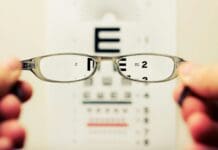This post is also available in:
 עברית (Hebrew)
עברית (Hebrew)
Researchers have recently introduced a new approach to self-supervised learning that significantly improves a machine’s ability to both recognize objects and understand their orientation in space. This study, presented at the European Conference on Computer Vision in Milan, addresses a common challenge in autonomous systems, such as self-driving cars and robotics, where understanding both the identity and position of an object is critical for safety and efficiency.
Self-supervised learning is a machine learning technique that trains models on unlabeled data, allowing systems to generalize better in real-world environments. While this method is great at identifying objects, it has traditionally struggled when objects are viewed from different angles or poses. This limitation can be problematic for various applications that require the machine to understand the angle of the object in front of it to decide further action.
According to TechXplore, to overcome this challenge, the research team developed a new benchmark for training models on “pose-aware” recognition. The approach uses a dataset of unlabeled image triplets, each consisting of three consecutive images of the same object captured from slightly different angles. This setup is similar to the behavior of robots as they move around an environment, observing the same object from various perspectives without prior knowledge of its identity or pose.
The team employed a novel technique of regularizing the feature space at the mid-layer of the neural network, which maps the three views of the same object onto a straight line. This method not only improves pose estimation accuracy by 10-20%, but also enhances the model’s ability to identify objects in new, unseen positions without compromising its object recognition capabilities.
The new technique offers promising implications for autonomous vehicles, robotics, and other AI systems by enabling more accurate and robust understanding of both objects and their spatial relationships. Furthermore, the approach has potential applications beyond visual recognition, such as in analyzing audio data, where understanding continuous changes over time is essential.


























